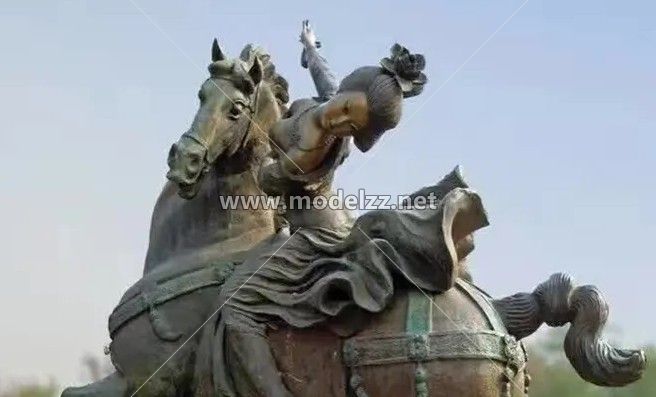Today we share eight steps to cast a giant outdoor bronze figure statue for you. An outstanding master piece art sculpture comes from a brilliant idea, and a professional designer makes it true. We start our process by detailed dialogue with clients and then spent days even several weeks thinking about modeling and creation, so that the sculpture can embody the image exactly.
Step Two is making Clay Framework. It was necessary to make a strong framework to support the clay, just like a pillar in a house. The framework was firstly set up by piecing together the rolled steel according to the model, as clay is soft and wet, the sculptors needed to make some wooden sheets to support the clay to avoid falling. The whole framework, which was little smaller and thinner than the completed sculpture, looked like a huge skeleton.

The next step was to create its surface initially. In this stage, the sculptors applied clay to cover the whole framework, after which the sculpture began to appear its image. The rubber mixture is applied directly to the surface of the clay, using a brush to paint it onto the surface of original clay and fixed with plaster, wooden bar and hemp. Then the sculptor brushed wax onto rubber mold several times and made up the form of sculpture.

Step Six: Bronze city Sculpture Casting. Bronze casting was the most important part to fabricate the large sculpture. In this step, both sand-casting and lost-wax casting are applied. Under high temperature of 1400 degrees, the wax pattern lost and the bronze sculpture appeared.
After casting, the bronze custom Bronze Sculpturesis very rough, and the craftsmen needed to weld the small holes on casting bronze, and then polished it in order to make the surface smooth. Polishing the metal sculptures was also a significant task during the process. Polishing made it more smooth and shining. After the sculpture was installed, the last step is doing patina on bronze. Before doing it, it is necessary to ensure the sculpture was clean and free of oil and grease by scrubbing it with a weak "pickle" solution of nitric acid. The craftsmen sand blast the bronze, and a couple coats of ferric nitrate, ammonium sulfide was applied to darken the sculpture and add some cooler silver and gray color. Surely, patina risen the bronze sculpture and it looked more solemn.

